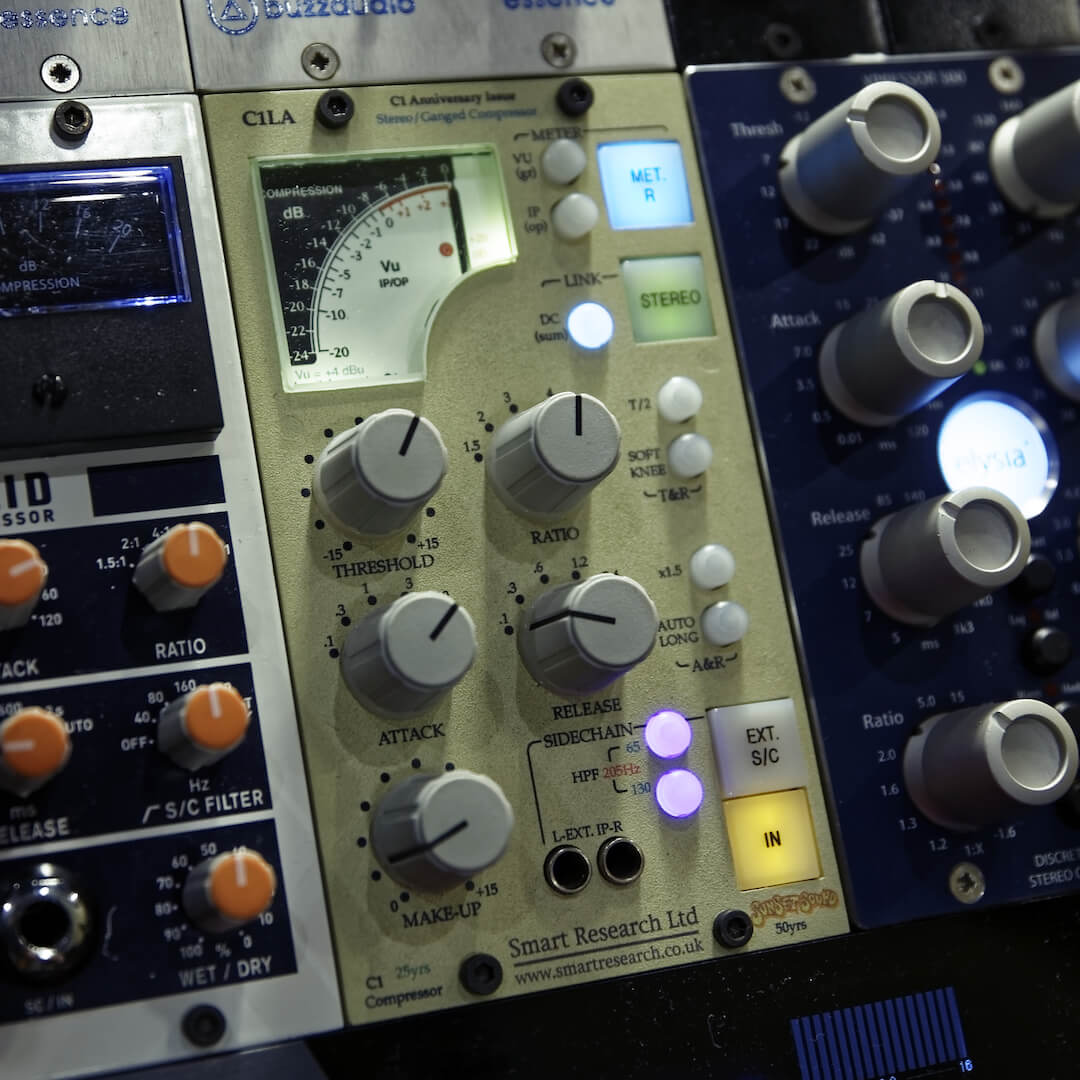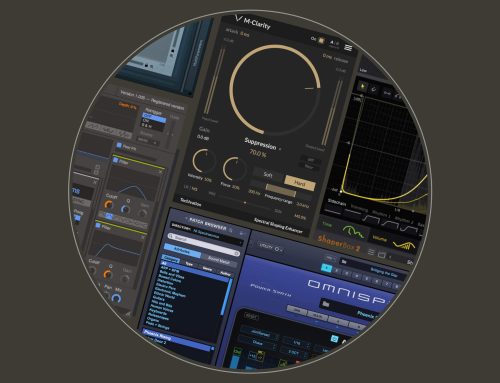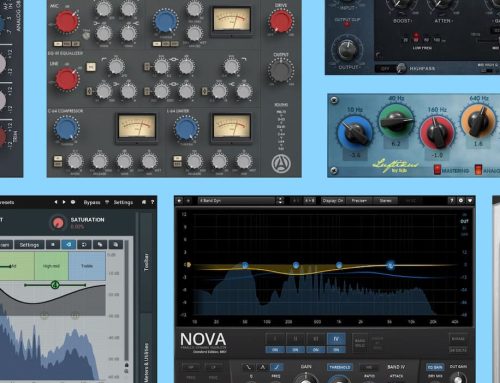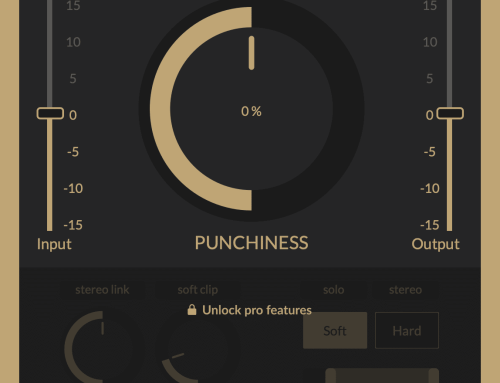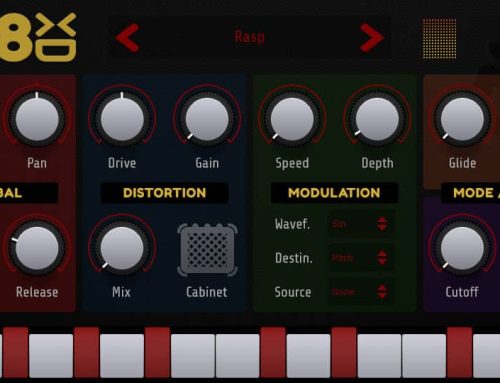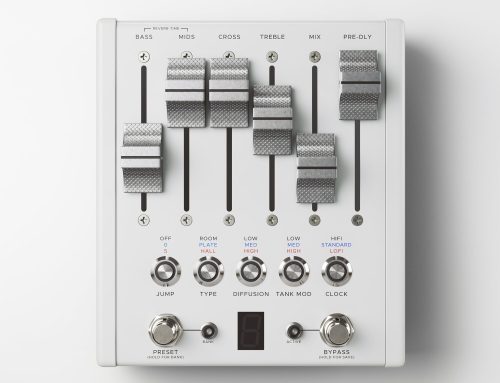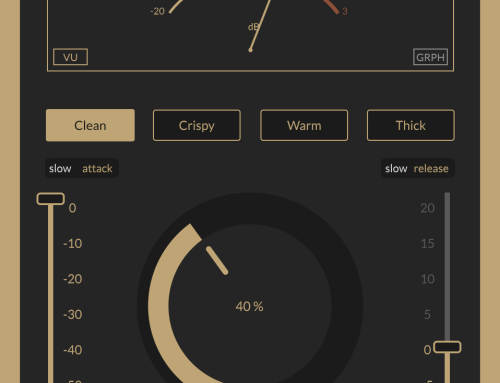The C1LA is a stereo VCA compressor inspired by the now renowned SSL Quad Comp from the G-series consoles. It is designed for the API 500-series format and is packed with features and functionality found only on high-end devices, often twice its price. In this article, we’ll put the C1LA to the test. We’ll explore what makes it unique and how it compares to some of its rivals.
HERITAGE
After the overwhelming success of the SSL G-series consoles from the 80s, it wasn’t long before the industry demanded a standalone version of the legendary SSL Bus Compressor found in the center sections of those desks. Alan Smart, employed as a console designer for SSL at the time, recognized the potential for such a standalone unit and was the first to fill that void. In 1988 he released the first-ever 19-inch rack-mountable stereo bus compressor modeled after the SSL 4K Bus Comp – The Smart Research Audio C1.
Alan’s innovative thinking equipped the C1 with dual-mono compression, entirely independent controls for the left and right sides, two VU meters, and stereo-link functionality. Soon after, Mr. Smart developed the C2 – an updated version of the C1 with side-chain options and “Crush” circuitry. Over the following decades, C1 and C2 became legends on their own and made their way to many professional recording and mixing studios. Today, they are still being sold by most major distributors as demand isn’t drying out.
That brings us to the year 2013 when Mr. Smart released the C1LA to celebrate the 25th anniversary of Smart Research Audio and the 50th anniversary of Los Angeles’ Sunset Sound (Alan’s North American Distributor). Now, eight years later, we are reviewing the C1LA at Musixon Magazine and putting it through its paces to see what this compressor can bring to the table in 2021 compared to the countless SSL Bus Compressor clones made for the API 500-series format.
THE G-MOJO
We can’t talk about SSL-style compressors without first discussing what gives them their “SSL” sound. These are transformer-less solid-state devices that do not color the sound in the same fashion as transformer and tube gear, yet their compression often has a recognizable imprint on the music.
That mojo that all of us, SSL-lovers, are chasing comes mainly from the VCA chips used in those devices. At current times, probably 99 out of 100 stereo VCA compressors use chips made by the company THAT, and to a large degree, that explains why they sound so similar.
The SSL purists out there would often claim that a true authentic Quad Bus compressor would have to use the now discontinued “Gold Cans” (VCA chips made by DBX back in the day) as they powered those early G-series desks. However, I would beg the difference. In truth, very few consoles featured those chips before “THAT” took over the manufacturing of VCAs for SSL. We hear people refer to that recognizable sound on all these hit records from the past as the SSL sound. But “that sound” is the sound of THAT VCAs as most G-series consoles were equipped with them.
The reason I’m telling you all this is so you don’t get discouraged when browsing through the web and inevitably reading about the Gold Cans. VCA chips made by THAT are perfectly adequate for their purpose. They are a feature in almost every new Quad Bus clone, including the ones made by SSL-themselves and Alan’s C1LA.
FEED-FORWARD-THINKING
As per tradition for SSL VCAs, the C1LA is a feedforward compressor. This older design draws its side-chain signal from the front (before it hits the compressor and gain circuits), giving it a fast, responsive nature and is often associated with harder-sounding compression. It tends to grab transients quicker than feedback-style compressors do and has a harder knee. That’s probably why back in the 80s and 90s, when hard-hitting rock was at its heyday, this style of compression became a staple in 2-bus processing.
However beloved SSL Quad Bus compressors have become, in 2021, the shift in music technology has perhaps made those old beasts a bit obsolete. Their aggressive hard-knee compression isn’t suited for all genres anymore as today people cherish transients more than they did before. Sound systems, for once, are capable of producing much faster and more detailed transients. Add to that that modern music often demands high-pass side-chain filtering on the 2-bus to allow thick and deep low-end, the old Quad Bus is starting to fall behind.
My last argument as to why the old SSL design might be outdated is the trend I’ve observed over the past 5-10 years of more and more top-mixers going easy with the compression on their 2-Bus. Many professionals have moved to hybrid systems with heavy in-the-box processing. That allows them to have various compressor options on their subgroups to split the load between multiple devices rather than one. That, interns, makes mixers reach for a 2- Bus VCA capable of gentler and more transparent compression.
I suspect that in 2013 Alen Smart caught up with the trends and decided to redesign the beloved SSL Quad Bus once again so he can expand its flexibility. Not to mention – the unfolding “gold-rush” for the API 500-series format and its rapid popularisation. Alan packed the 2-slot faceplate of the C1LA with more controls than most of its rivals even in the 19’’ league could feature. That was forward-thinking at its finest because today (8 years later), what most of us need on our 2-bus is freedom, choice, flexibility, and versatility.
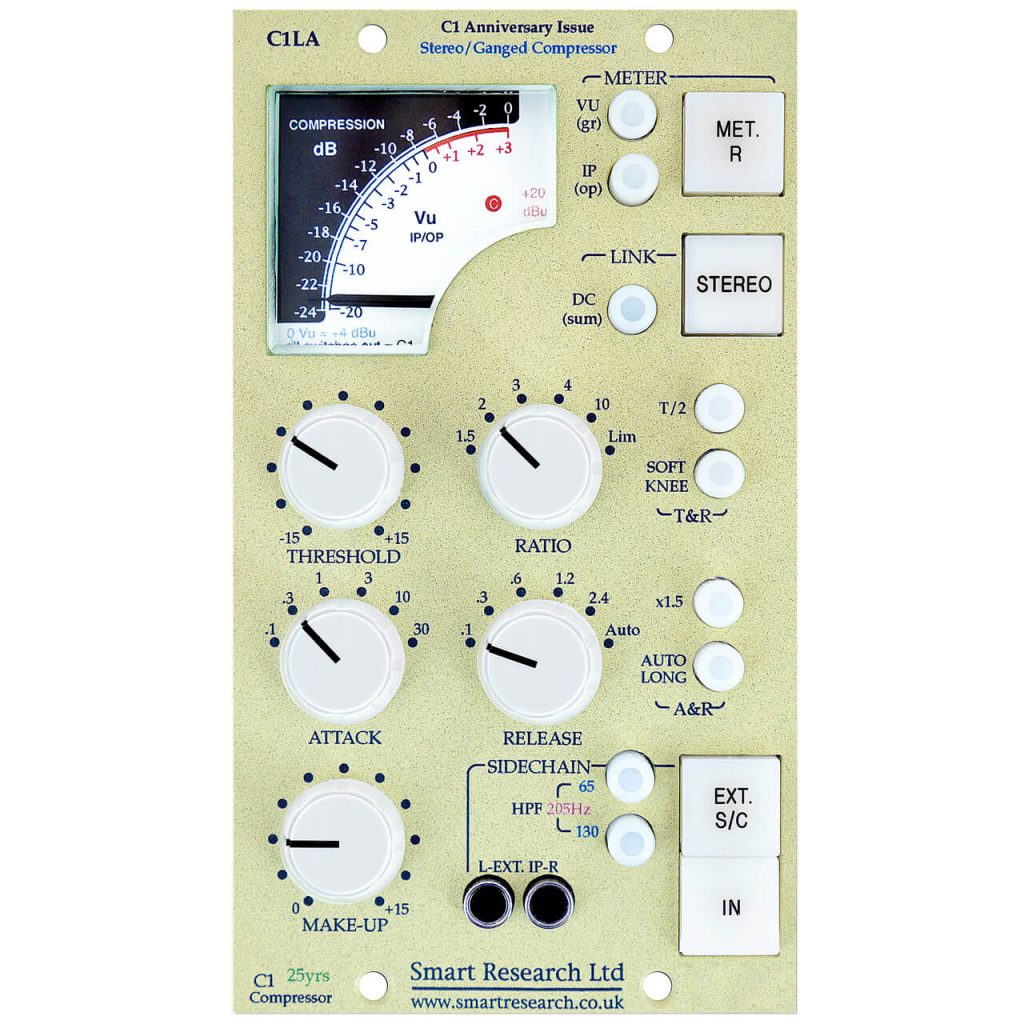
PLETHORA OF OPTIONS
As a C1 tribute, the C1LA features all of the original C1 circuitry and much more in a smaller and sexier package. It comprises two fully independent mono compressor circuit boards, three different modes of operation, and a plethora of controls that can rank it as one of the most versatile dynamics processors in its class.
Metering
To honor the C1 lineage of dual VU meters, the C1LA features a single level indicator that can show either the left or right side, but never both in a stereo fashion. Furthermore, it can display Gain Reduction, Input & Output level, and clipping (using a tiny LED).
The only-one-side monitoring may seem confusing at first, but for all you C1 users, it’s a blast from the past. It doesn’t disturb the workflow in any way and gives the device a sense of importance and pride as the C1LA is beating its chest: “Look what I can do!”
Modes of Operation
As with most modern stereo dynamic processors, the C1LA features both stereo linking and dual-mono operation. The additional DC-linked mode is Alan’s way of staying ahead of the curve and pushing the envelope of innovation.
DC-Linking is essentially a dual-mono mode, which protects the stereo image by diode- summing the two side-chains. Whichever side has the highest peak is used as the trigger for the compression on both sides. Now, that’s brilliant and is yet another example of excellent forward-thinking. Mixes today are getting wider and more engineers are reaching for dual- mono light compression on their 2-bus. The DC-linking of the C1LA is simply offering an elegant solution to the drawbacks of dual-mono.
While we’re on the topic of side-chaining – the C1LA is equipped with an internal HP filter on its SC (65Hz/130Hz/205Hz). To add insult to injury for all those compressors with limited side- chain options, the C1LA also has external stereo side-chaining inputs (bantam format) with a dedicated bypass.
Compression Controls
The available controls for fine-tuning the compression/limiting of the C1LA include all the standard SSL-type of settings for Ratio, Attack, and Release, and much more. As opposed to the SSL Quad Bus, the ratios of the C1LA include the additional 1.5:1, 3:1, and Limit (as if 10:1 wasn’t enough) as well as a 2.4 sec release time.
By this time, you might be thinking, “ok, that’s a bit much,” but wait – there’s more. The C1LA has an “x1.5” button, which multiplies the attack and release times by a factor of 1.5. That alone gives us a total of 12 attack times and 12 release times.
“Still not enough,” says Alan? Bellow the “x1.5,” we find a button labeled “AUTO LONG,” which only affects the Auto release setting. What it does is it essentially brings out half of the release fast and for the other half slow enough for you to go and grab a cup of coffee. In combination with “x1.5”, the “AUTO LONG” gives us four different Auto release times. I don’t know who needs that many, but hey… they are there at our disposal. As an alternative to the hard SSL knee, the C1LA offers a soft-knee option, which I found myself using most of the time.
Now, controlling all that madness might seem intimidating, so to make things easier, Alan has included a dedicated button to half the resolution of the Threshold knob for ultra-fine-tuning. Lastly, the C1LA has a standard +30dBu Make-up gain and a master Bypass button (with the VCAs always being in the circuit).
IN USE
I’m a sucker for SSL compression. Most of my time on the job is being spent in front of an SSL G4000 console. I’ve also owned and extensively used several Quad Bus clones, including one made by Stam Audio (SA4000), the Tegeler Audio Manufacture Creme (truly exceptional device), and the XLogic G Series Comp made by SSL.
I tested all these devices against our original Quad Bus, and the one common thing between them is that they all sounded quite similar to each other, but they all differed from the original. They were all able to glue my mixes nicely but somehow missed that sweet high-end crush that the old Quad Bus added to the music. That crush played a big part in why this design became so favored for drum processing as it added a unique punch and crunch. It is the reason why so many of us are chasing the SSL sound today.
When C1LA’s turn came, it had that very same crunch. It also had the aggressive punch of the Quad Bus and then some. I’d say that it was behaving even more aggressively than the original. It was as if the compression of C1LA was coming down on the music like a hammer from the sky. It wasn’t harsh or unmusical, but just harder and more “in your face.”
That being said, the extra controls allowed the C1LA to go where the Quad Bus wasn’t able to, taming down into this concealed weapon that was gently brushing over the music and not screaming too loudly. In a way, it was like having several different compressors in one. In comparison, the old Quad Bus felt a bit like a one-trick pony.
While some stereo VCAs like the Tegeler Audio Manufaktur Creme were more discrete, the C1LA definitively had “a sound.” It was not obtrusive or coloring like a transformer device but had something that would make it a memorable device.
In my experience, people tend to stick with settings on a 2-bus compressor, so one might debate wether-or-not all the available controls on the C1LA were even necessary in the first place. But ultimately, having that high level of control means that everyone can find their
preferred settings. I never knew how much I’ve been missing out by not having a 15ms attack time on a 2-bus before the C1LA.
After using it, it is evident that all the extra features on this device have been carefully selected to fill a missing void in the market. Features like the x1.5, DC-linking, soft knee, and HP filtering I found myself leaving on for every mix because they just made things sound better, for lack of a better word.
Drum Processing Examples
We compared the C1LA back to back with our original Quad Bus Comp from our SSL G4000 console in the following test. For all the examples, the Ratio was set at 4:1, Attack at 10ms, and Release at 0.1s.
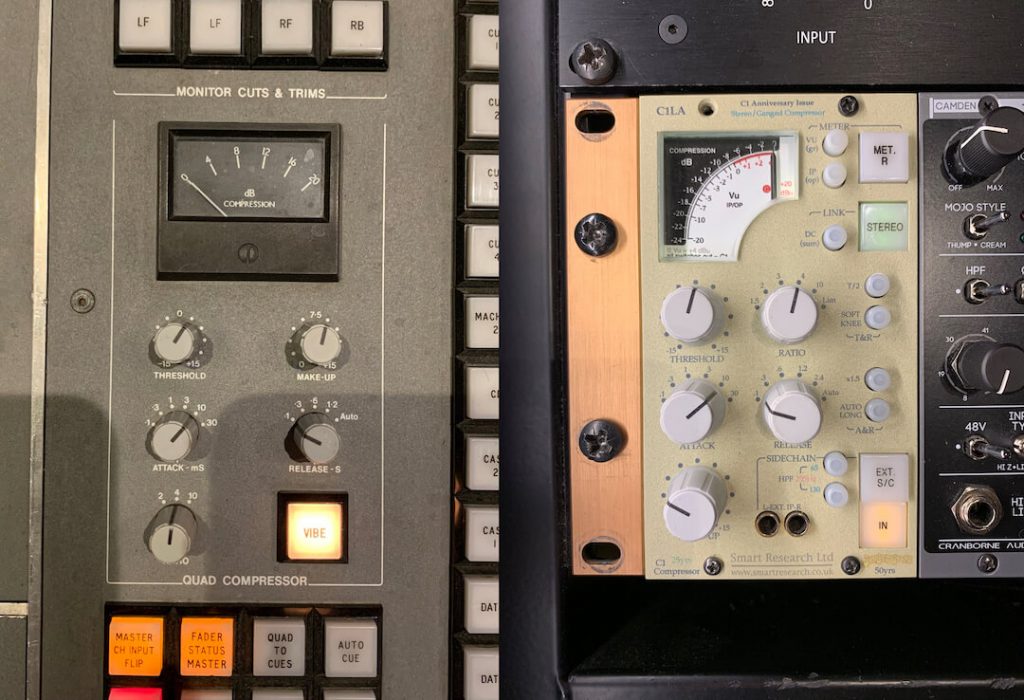
The samples in A & B represent the C1LA (A) and Quad Bus (B). In the first test, we compare a standard stereo SSL-style compression with all the extra voodoo of the C1LA disengaged. We are compressing with about -3 to -4 dB.
RAW Sample
Sample A (-4dB GR)
Sample B (-4dB GR)
In the second example, we are testing a more aggressive compression by taking out -8 to -10 dB. Still not changing the ratio, attack, and release times, and no C1LA trickery.
RAW Sample
Sample A (-8dB GR)
Sample B (-8dB GR)
In our last example labeled “C,” we have the C1LA compressing -3 to -4 dB again, but this time the HP filter is ON at 205Hz, as well as the soft knee and DC-link mode. If we compare these results with the first example of A & B, where we were applying the same amount of compression, we can notice how the signal has changed quite a bit. “Sample C” still has a lot of that punch and crunch in the highs, but the track feels like it’s breathing more. It’s almost like there is more space around it. More of the transients are passing through, and the low- end is left with more room to develop. It just feels less squeezed.
Sample C (-4dB GR)
Sample A (-4dB GR)
Sample B (-4dB GR)
Strangely, the results tell me that perhaps the engaged voodoo on the C1LA makes the compressor behave more like the original Quad Bus. With the voodoo disengaged, the compression is more aggressive and overall less forgiving. It almost feels to my ears that the C1LA either has a slightly faster attack or a harder knee as the Quad Bus seems to be letting through more of the initial transients before biting.
Either way, it’s nice to know that I can get close to the Quad Bus sound if I want to or go the more aggressive way with a few simple knobs and buttons.
VERDICT
There is a reason why some companies use the word “Research” in their names and branding. The C1LA from Smart Research Audio is a prime example where intelligent research and innovation manifest in a truly sublime product with extraordinary functionality and performance.
In terms of controls, the C1LA is one step away from API’s 2500 as it has enough settings for every purpose you might think of. In terms of sound, it’s the Quad Bus of the past but pumped on steroids. In terms of functionality, it’s the Quad Bus of the future. In terms of recognition, it’s the one device that people in the pro circles talk about, yet it stays away from the glowing eyes of the mainstream.
After using and reviewing the C1LA, I would struggle to top that compressor even with a VCA 3 times its price. Ever since that device came into my workflow, I haven’t reached for the Quad Bus in our G4000, and to be completely honest with you – reaching for it in some songs might feel like a step backward. As great as the Quad Bus is, I’ve always felt that I’ve had to tailor the music to the compressor when mixing into it. With the C1LA, I feel like I can genuinely tailor the compressor to the music, and I certainly will not take it out of my rack for love nor money.
Written By Ivo Sotirov

